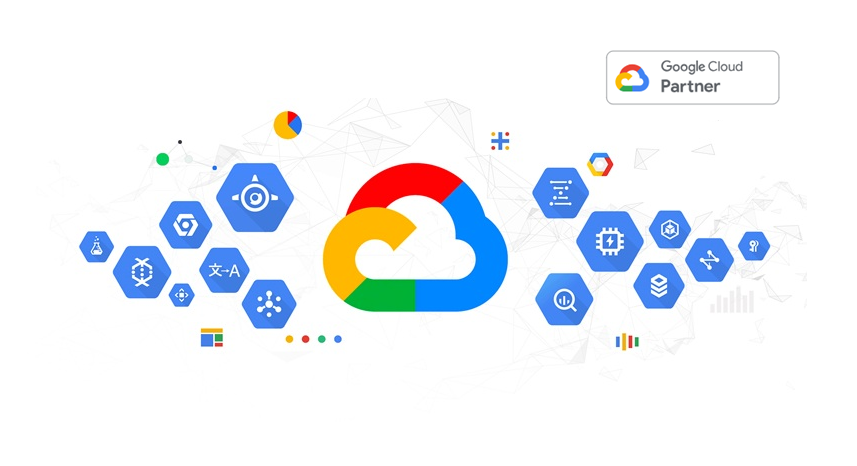PART I: MANAGING SECURITY IN GOOGLE CLOUD
Module 1 Foundations of GCP Security
Understand the GCP shared security responsibility model
Understand Google Cloud’s approach to security
Understand the kinds of threats mitigated by Google and by GCP
Define and Understand Access Transparency and Access Approval (beta)
Module 2 Cloud Identity
Cloud Identity
Syncing with Microsoft Active Directory using Google Cloud Directory Sync
Using Managed Service for Microsoft Active Directory (beta )
Choosing between Google authentication and SAML-based SSO
Best practices, including DNS configuration, super admin accounts
Lab: Defining Users with Cloud Identity Console
Module 3 Identity, Access, and Key Management
GCP Resource Manager: projects, folders, and organizations
GCP IAM roles, including custom roles
GCP IAM policies, including organization policies
GCP IAM Labels
GCP IAM Recommender
GCP IAM Troubleshooter
GCP IAM Audit Logs
Best practices, including separation of duties and least privilege, the use of Google groups in policies, and avoiding the use of primitive roles
Labs: Configuring Cloud IAM, including custom roles and organization policies
Module 4 Configuring Google Virtual Private Cloud for Isolation and Security
Configuring VPC firewalls (both ingress and egress rules)
Load balancing and SSL policies
Private Google API access
SSL proxy use
Best practices for VPC networks, including peering and shared VPC use, correct use of subnetworks
Best security practices for VPNs
Security considerations for interconnect and peering options
Available security products from partners
Defining a service perimeter, including perimeter bridges
Setting up private connectivity to Google APIs and services
Lab: Configuring VPC firewalls
PART II: SECURITY BEST PRACTICES ON GOOGLE CLOUD
Module 5 Securing Compute Engine: techniques and best practices
Compute Engine service accounts, default and customer-defined
IAM roles for VMs
API scopes for VMs
Managing SSH keys for Linux VMs
Managing RDP logins for Windows VMs
Organization policy controls: trusted images, public IP address, disabling serial port
Encrypting VM images with customer-managed encryption keys and with customer-supplied encryption keys
Finding and remediating public access to VMs
Best practices, including using hardened custom images, custom service accounts (not the default service account), tailored API scopes, and the use of application default credentials instead of user-managed keys
Lab: Configuring, using, and auditing VM service accounts and scopes
Encrypting VM disks with customer-supplied encryption keys
Lab: Encrypting disks with customer-supplied encryption keys
Using Shielded VMs to maintain the integrity of virtual machines
Module 6 Securing cloud data: techniques and best practices
Cloud Storage and IAM permissions
Cloud Storage and ACLs
Auditing cloud data, including finding and remediating publicly accessible data
Signed Cloud Storage URLs
Signed policy documents
Encrypting Cloud Storage objects with customer-managed encryption keys and with customer-supplied encryption keys
Best practices, including deleting archived versions of objects after key rotation
Lab: Using customer-supplied encryption keys with Cloud Storage
Lab: Using customer-managed encryption keys with Cloud Storage and Cloud KMS
BigQuery authorized views
BigQuery IAM roles
Best practices, including preferring IAM permissions over ACLs
Lab: Creating a BigQuery authorized view
Module 7 Securing Applications: techniques and best practices
Types of application security vulnerabilities
DoS protections in App Engine and Cloud Functions
Cloud Security Scanner
Lab: Using Cloud Security Scanner to find vulnerabilities in an App Engine application
Identity Aware Proxy
Lab: Configuring Identity Aware Proxy to protect a project
Module 8 Securing Kubernetes: techniques and best practices
Authorization
Securing Workloads
Securing Clusters
Logging and Monitoring
PART III: MITIGATING VULNERABILITIES IN GOOGLE CLOUD
Module 9 Protecting against Distributed Denial of Service Attacks
How DDoS attacks work
Mitigations: GCLB, Cloud CDN, autoscaling, VPC ingress and egress firewalls, Cloud Armor (including its rules language)
Types of complementary partner products
Lab: Configuring GCLB, CDN, traffic blacklisting with Cloud Armor
Module 10 Protecting against content-related vulnerabilities
Threat: Ransomware
Mitigations: Backups, IAM, Data Loss Prevention API
Threats: Data misuse, privacy violations, sensitive/restricted/unacceptable content
Threat: Identity and Oauth phishing
Mitigations: Classifying content using Cloud ML APIs; scanning and redacting data using Data Loss Prevention API
Lab: Redacting Sensitive Data with Data Loss Prevention API
Module 11 Monitoring, Logging, Auditing, and Scanning
Security Command Center
Stackdriver monitoring and logging
Lab: Installing Stackdriver agents
Lab: Configuring and using Stackdriver monitoring and logging
VPC flow logs
Lab: Viewing and using VPC flow logs in Stackdriver
Cloud audit logging
Lab: Configuring and viewing audit logs in Stackdriver
Deploying and Using Forseti
Lab: Inventorying a Deployment with Forseti Inventory (demo)
Lab: Scanning a Deployment with Forseti Scanner (demo)


